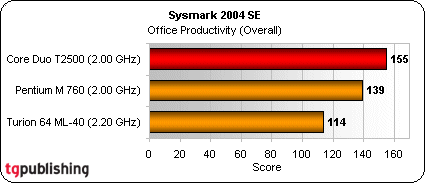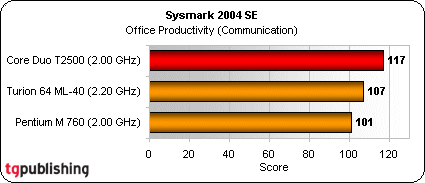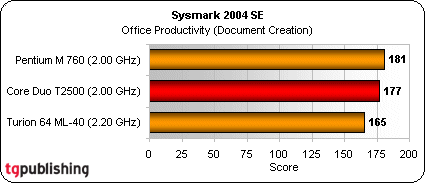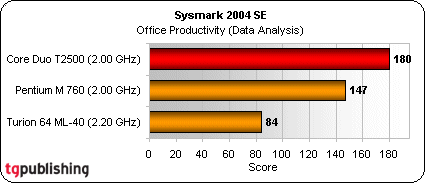Will Core Duo Notebooks Trade Battery Life For Quicker Response?
SYSmark 2004 SE, Continued
SYSmark 2004 SE Analysis And Conclusions
The SYSmark 2004 SE results show that the Asus A6JA Core Duo system runs significantly faster than a single core system operating at the same core clock speed. They also show a clear advantage over systems built around AMD technology. The Overall Score is about 30 percent higher than for any single core system. If you look more closely at the two component values for Office Productivity and Internet Content Creation, you'll see that values for Office Productivity are only about 11 percent higher than for single core systems, but that for Internet Content Creation the difference is a much more impressive 48 percent.
This situation is easy to explain as a natural result of the fact that so many of the applications used to make up the workload for Internet Content Creation in SYSmark 2004 SE are already optimized for dual core systems. Good examples of such software include Windows Media Encoder and Photoshop, also tested separately in this article.
In the Office arena the performance advantage narrows, because these applications work well with either single core or dual core processors, but run faster when two independent processors are available than when only one is on call. Another contributor to improved performance is higher memory bandwidth, despite working with identical memory modules and memory timings. We already reported on this phenomenon earlier in discussing SiSoft Sandra results.
Get Tom's Hardware's best news and in-depth reviews, straight to your inbox.
Current page: SYSmark 2004 SE, Continued
Prev Page Office Applications: SYSmark 2004 SE Next Page Battery Life: MobileMark 2005


